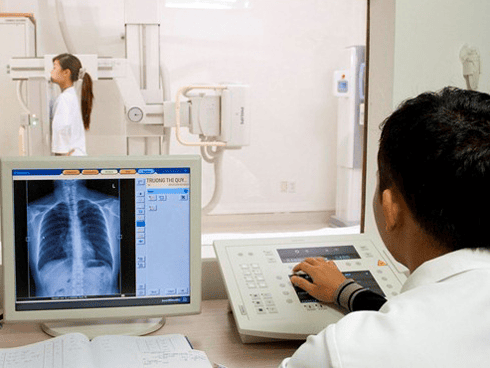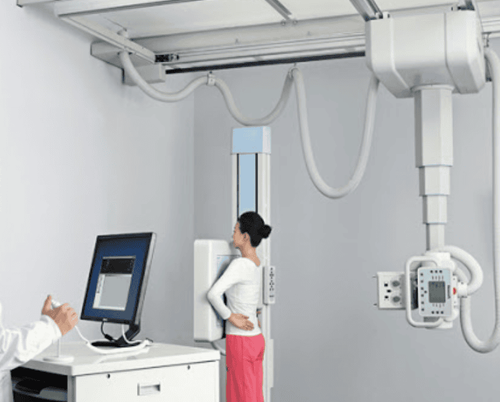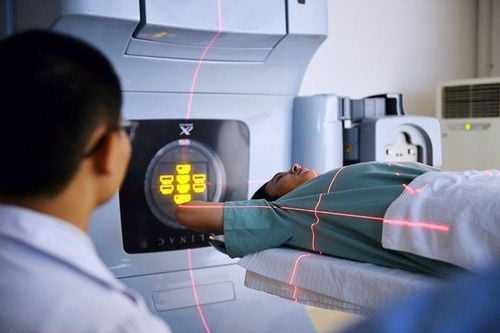This is an automatically translated article.
The article was professionally consulted by Master, Resident, Specialist I Trinh Le Hong Minh - Department of Diagnostic Imaging - Vinmec Central Park International General HospitalOver the decades, medical radiation has been better understood and a safe system for radiation dose has been developed. In medicine, artificial radioactive substances have brought great benefits, especially in the diagnosis and treatment of diseases.
1. What is radiation dose?
When using radioisotopes in medical diagnostic and therapeutic methods, it is important for healthcare professionals to understand the concept of radiation dose, in order to ensure radiation safety for patients, colleagues, and patients. for community. Thus, before working with radioactive substances, each person needs to understand the nature of ionizing radiation, their role in biomedical terms, understand the concept of radiation dose as well as safety measures. entirely when using radiation.Radiation dose represents the total amount of radiation energy absorbed by living cells and the ability to cause biological effects on local organs as well as the whole living organism. The unit of radiation dose is the Sievert (Sv), which is measured with a dosimeter. However, because Sv is a relatively large unit of radiation measurement, milliSievert (mSv) is more commonly used.
The ICRP (International Committee for Radiation Safety) recommendations have indicated that any exposure to radioactive material above the normal limit should be kept to a minimum. Every year, this recommendation is supplemented with dose limit indicators that are adjusted periodically, in order to help workers working in radiation conditions in particular and the general population in general to avoid the risk of radiation overdose. .
In specialized workplaces such as nuclear power plants, hospitals or places where X-rays are used for research and production, a small dosimeter must be worn to continuously determine radiation levels in environment.

2. What is the radiation dose limit for humans?
2.1. For radiation workers According to recommendations from ICRP, the radiation limit for radiation workers should not exceed 50 mSv/year, and the average dose for 5 consecutive years should not exceed 20 mSv. For pregnant women working under radiation conditions, the safe dose limit that should be applied is 2 mSv. Radiation doses are regulated to ensure that the occupational risk to workers working in a radioactive environment is not higher than the occupational risk to the vast majority of other industries (those considered to be the safest). Generally speaking).2.2. To the public Radiation dose limits for the general public are lower than for workers. According to ICRP, radiation levels that are safe to the public should not be higher than 1 mSv/year.
2.3. For the patient Patients are sometimes exposed to direct radiation risks from the indicated diagnostic and therapeutic approach. When taking X-rays, doctors must use doses many times higher than the radiation safe limit for the public. For radiation therapy, radiation doses can be increased to hundreds of times the recommended dose for workers. However, ICRP does not make recommendations on dose limits for patients. This is because radiation energy is used in medicine to identify diseases and to treat patients, so effective treatment is considered more important, even if medical personnel are forced to use it. high dose.

3. The role of radiation in medicine
Radiant energy has special applications in medicine, specifically nuclear medicine. This is a medical specialty in which medical personnel use radioactive substances for the purpose of diagnosing and treating diseases.In medical diagnostics, the system records the radiation emitted from inside the body and is known as the physiologic imaging modality. The two most common imaging modalities in nuclear medicine are single-photon emission tomography (SPECT) and positron emission tomography.
During the procedure, radiopharmaceuticals are introduced into the body, usually intravenously or orally. The technician then uses external detectors to capture and form images, obtained by radiation emitted from radioactive carriers.
Compared with diagnosis, radiation treatment requires a larger dose, so the effect of radiation on healthy tissues is also much higher, especially in radiation therapy for cancer. This is one of the difficulties and limitations of radioisotope treatments. However, medical radiation is still an effective treatment method that is applied in many cases in clinical practice.
Vinmec International General Hospital is one of the hospitals that not only ensures professional quality with a team of leading medical doctors, modern equipment and technology, but also stands out for its examination and consultation services. comprehensive and professional medical consultation and treatment; civilized, polite, safe and sterile medical examination and treatment space.
If you have a need for consultation and examination at Vinmec Hospitals under the nationwide health system, please book an appointment on the website for service.
Please dial HOTLINE for more information or register for an appointment HERE. Download MyVinmec app to make appointments faster and to manage your bookings easily.









